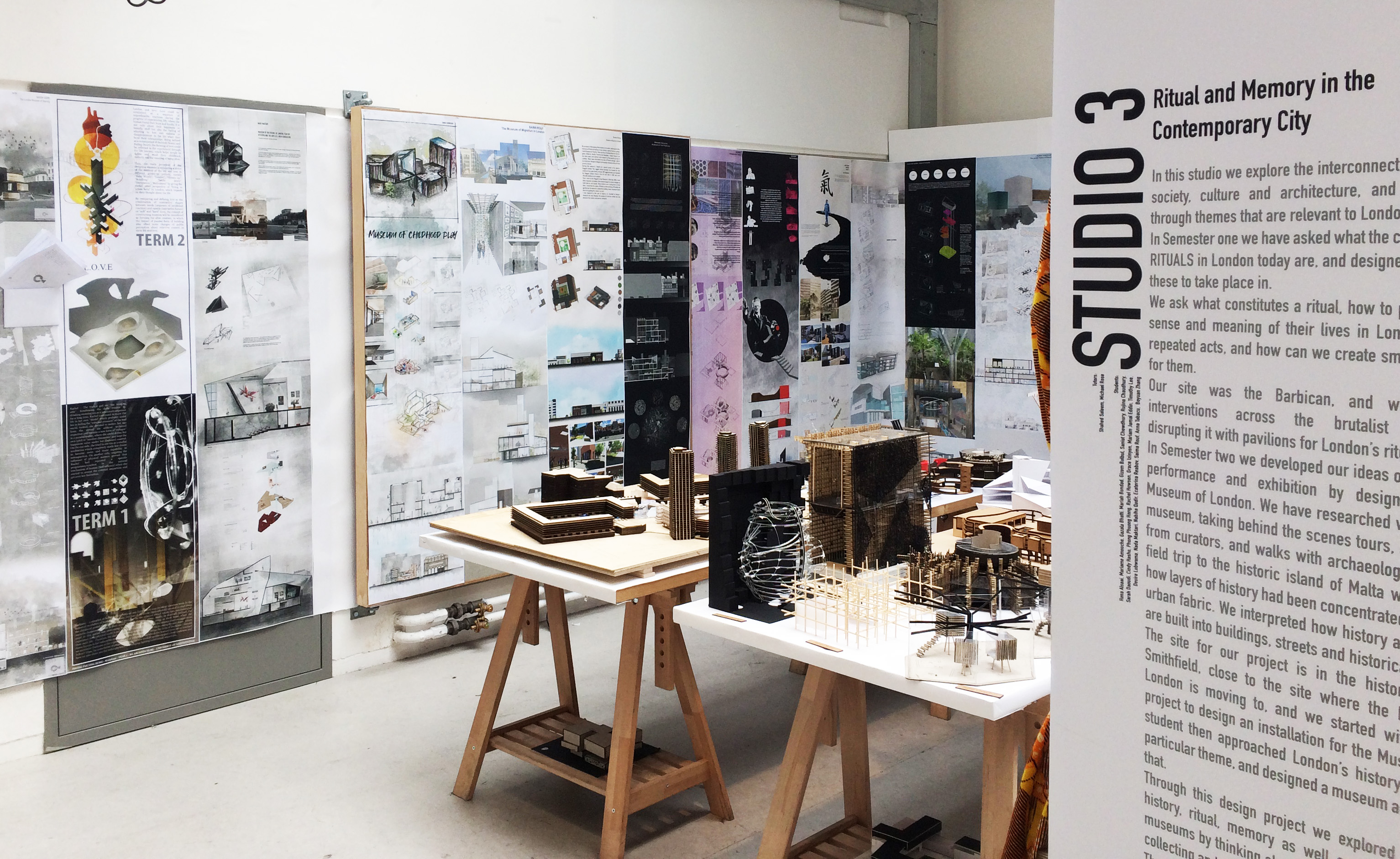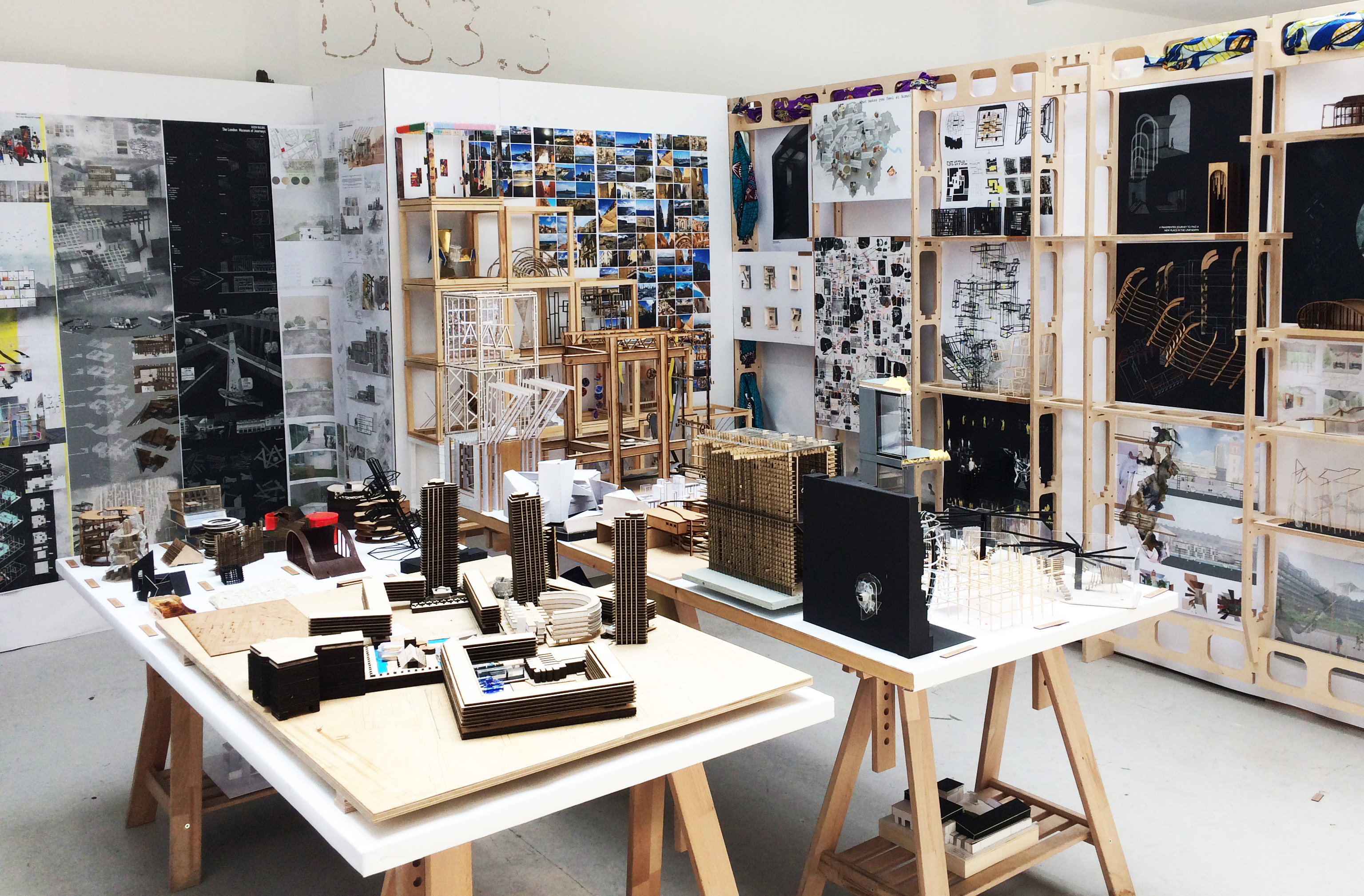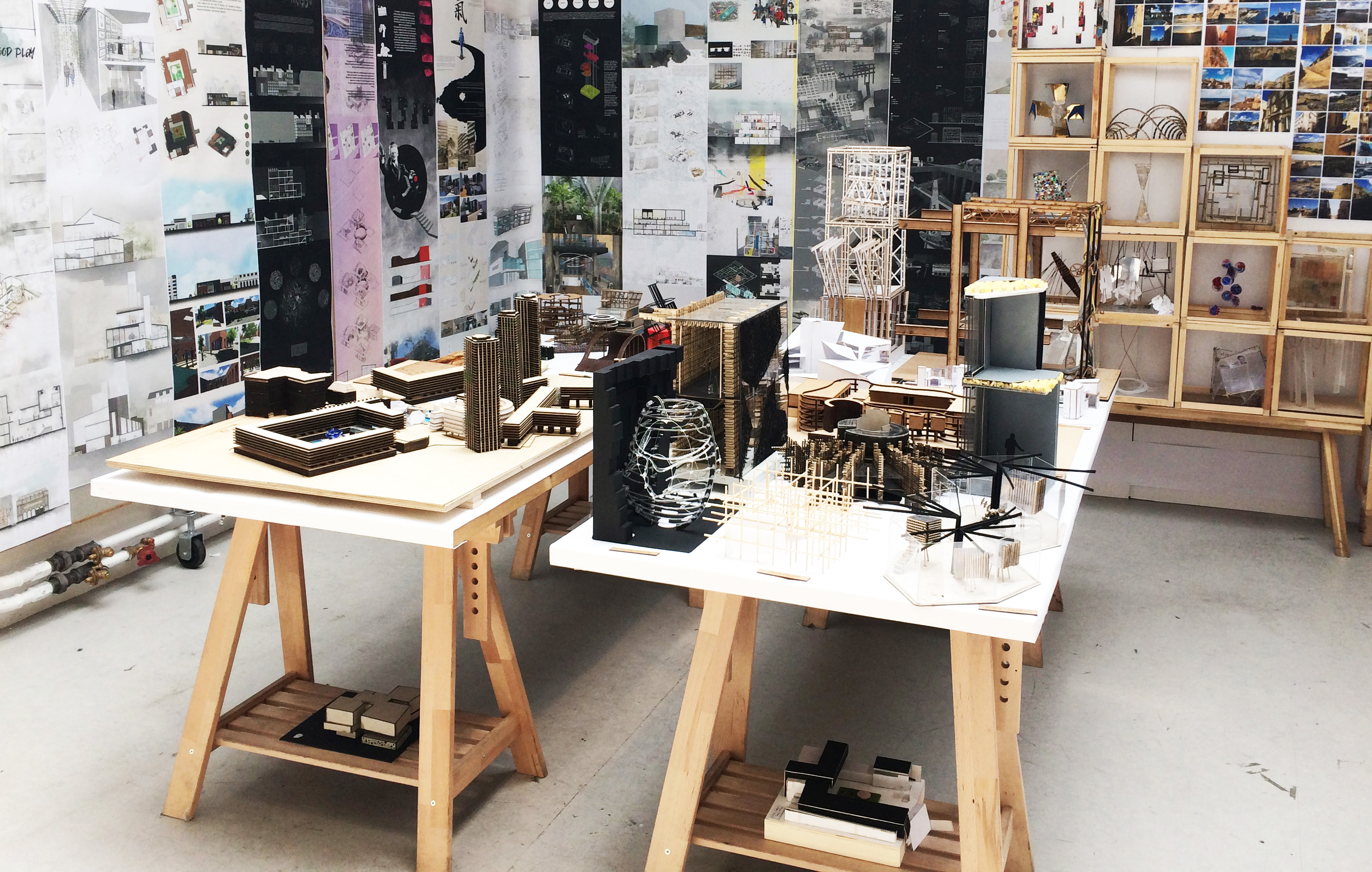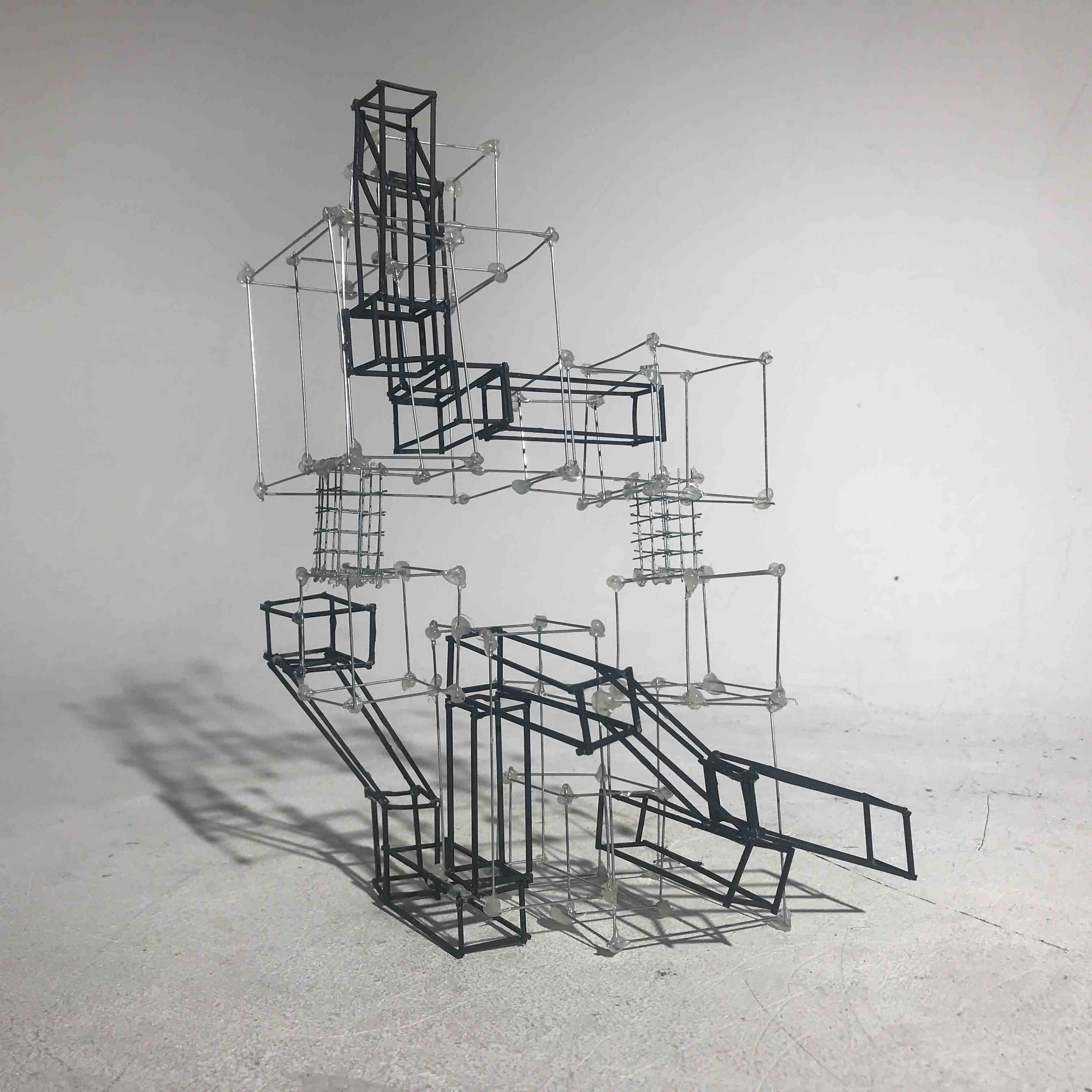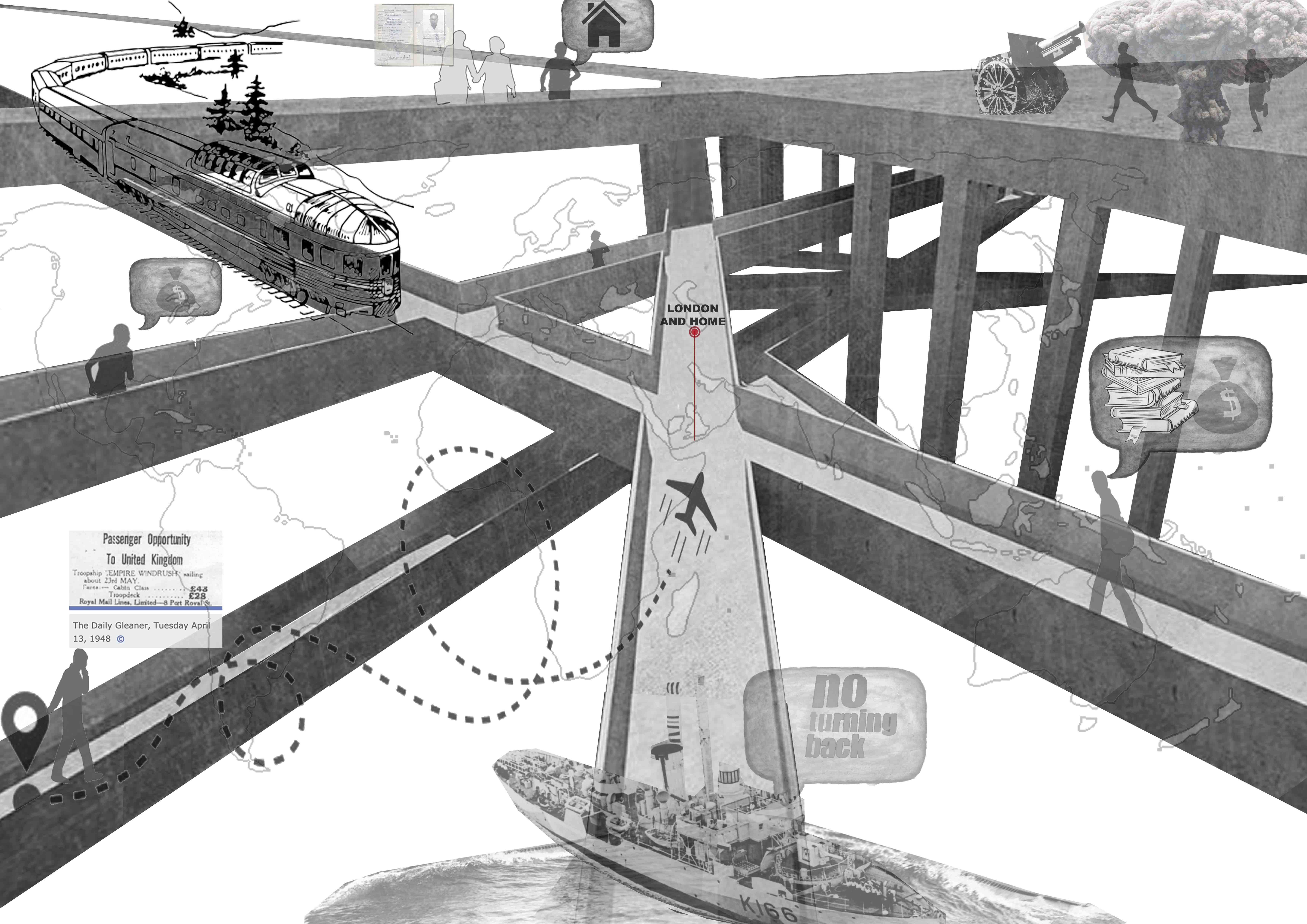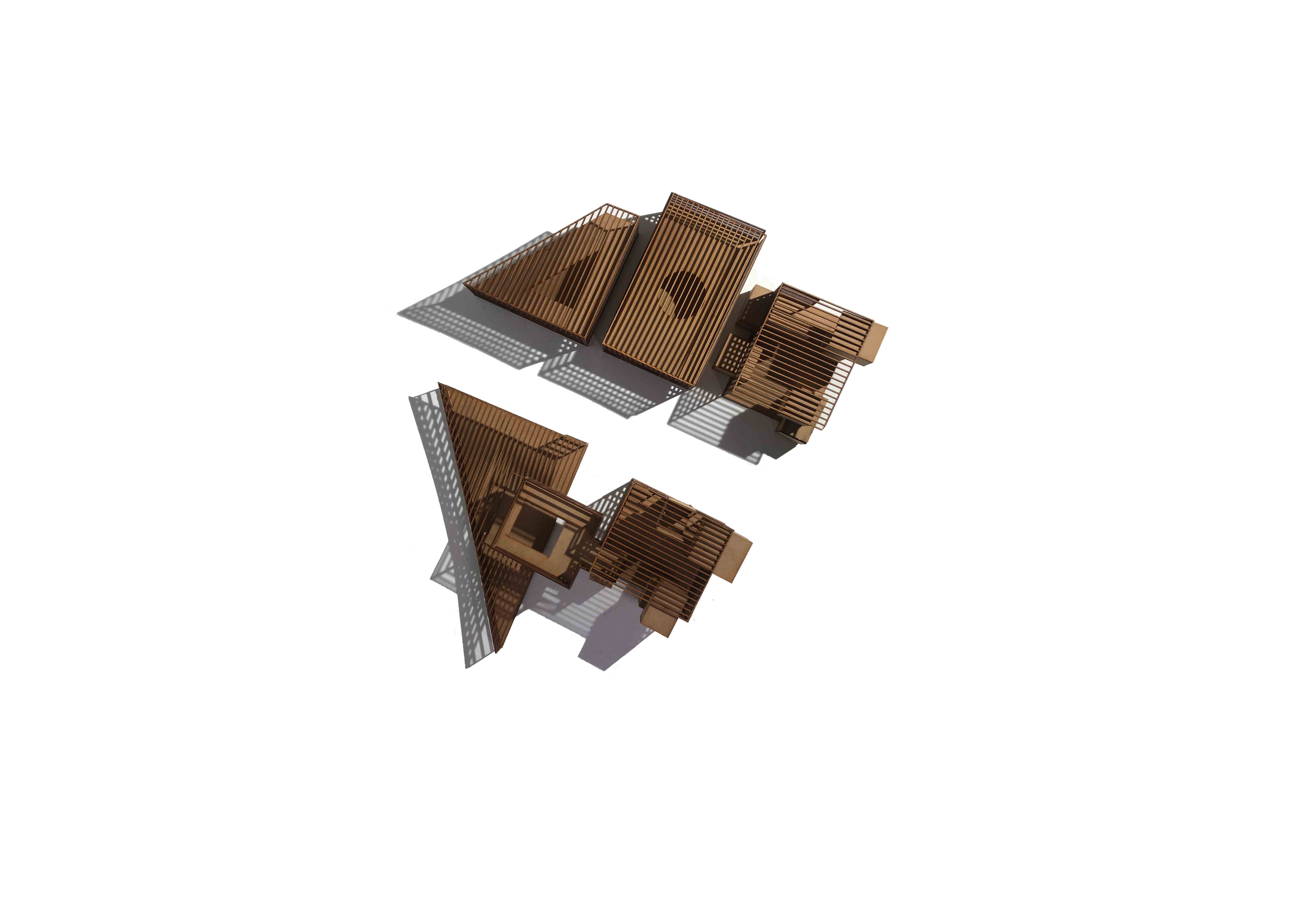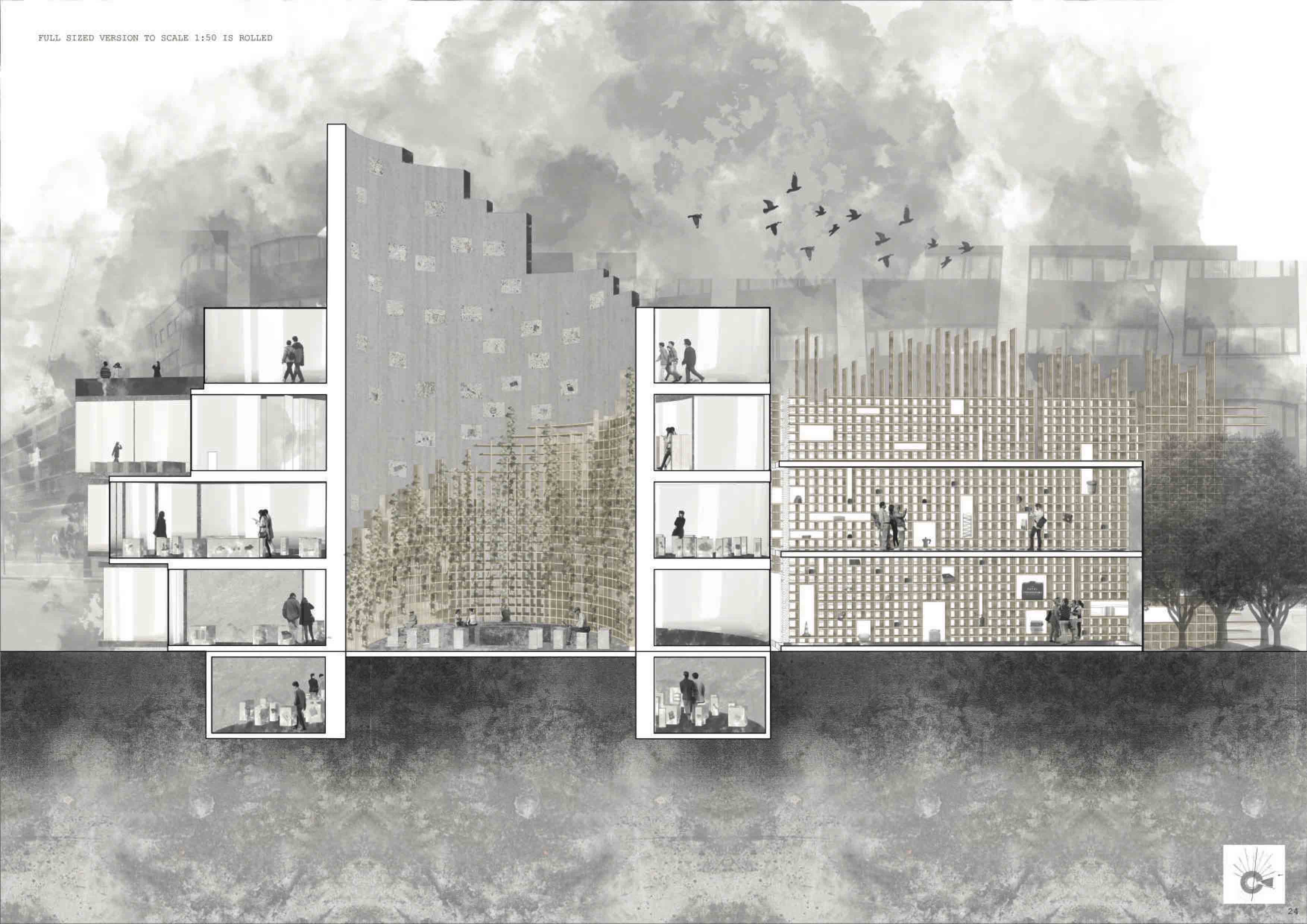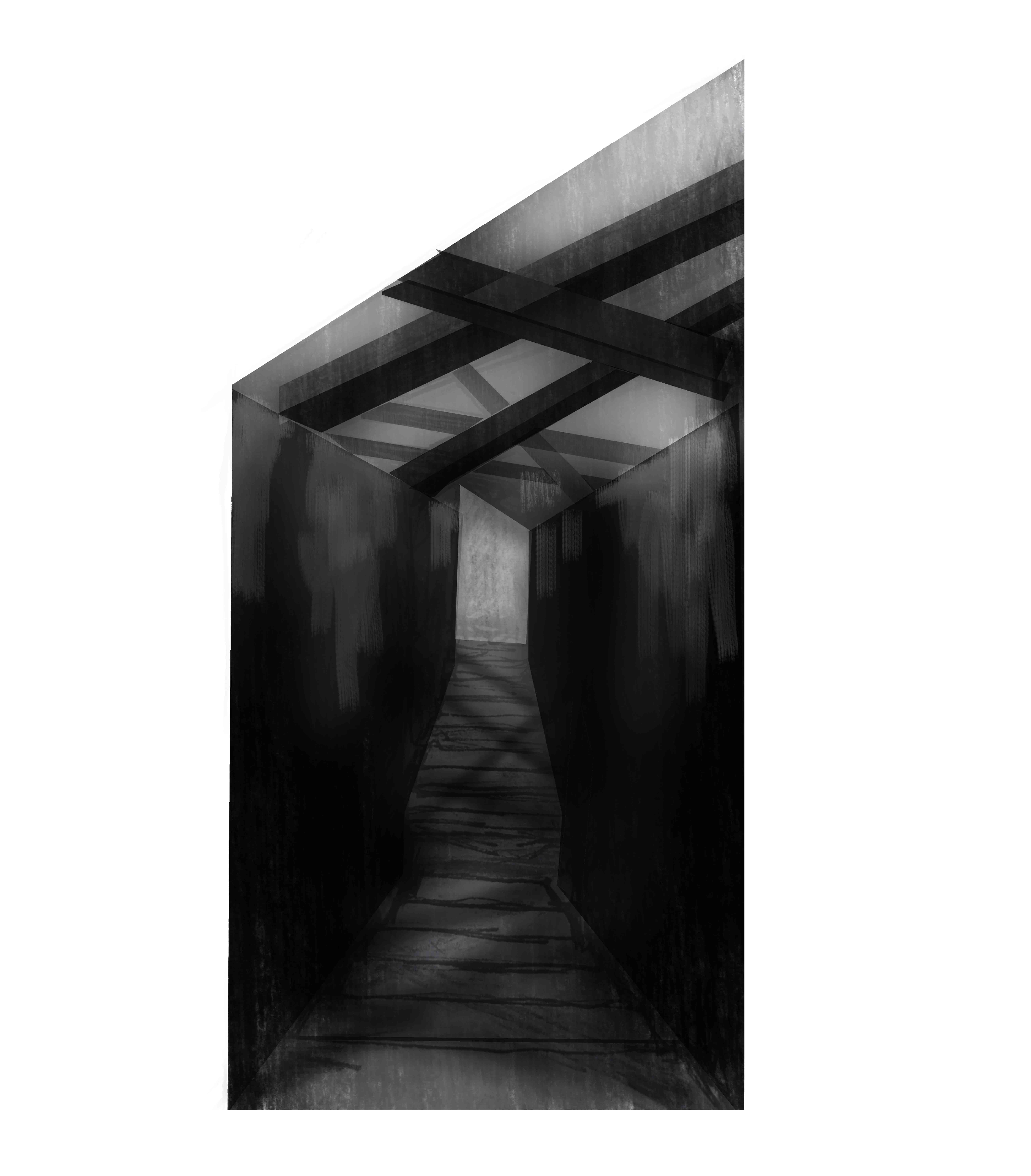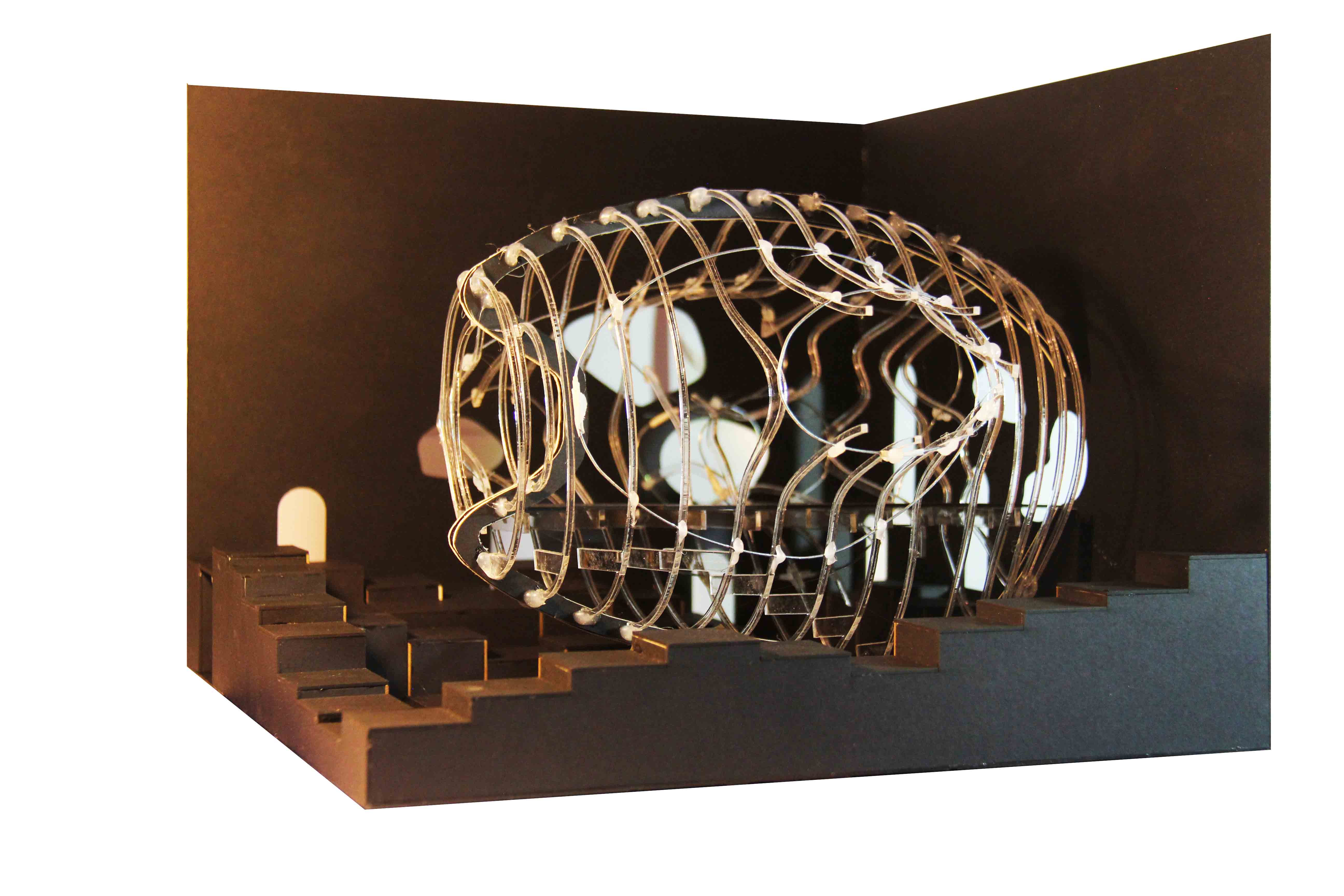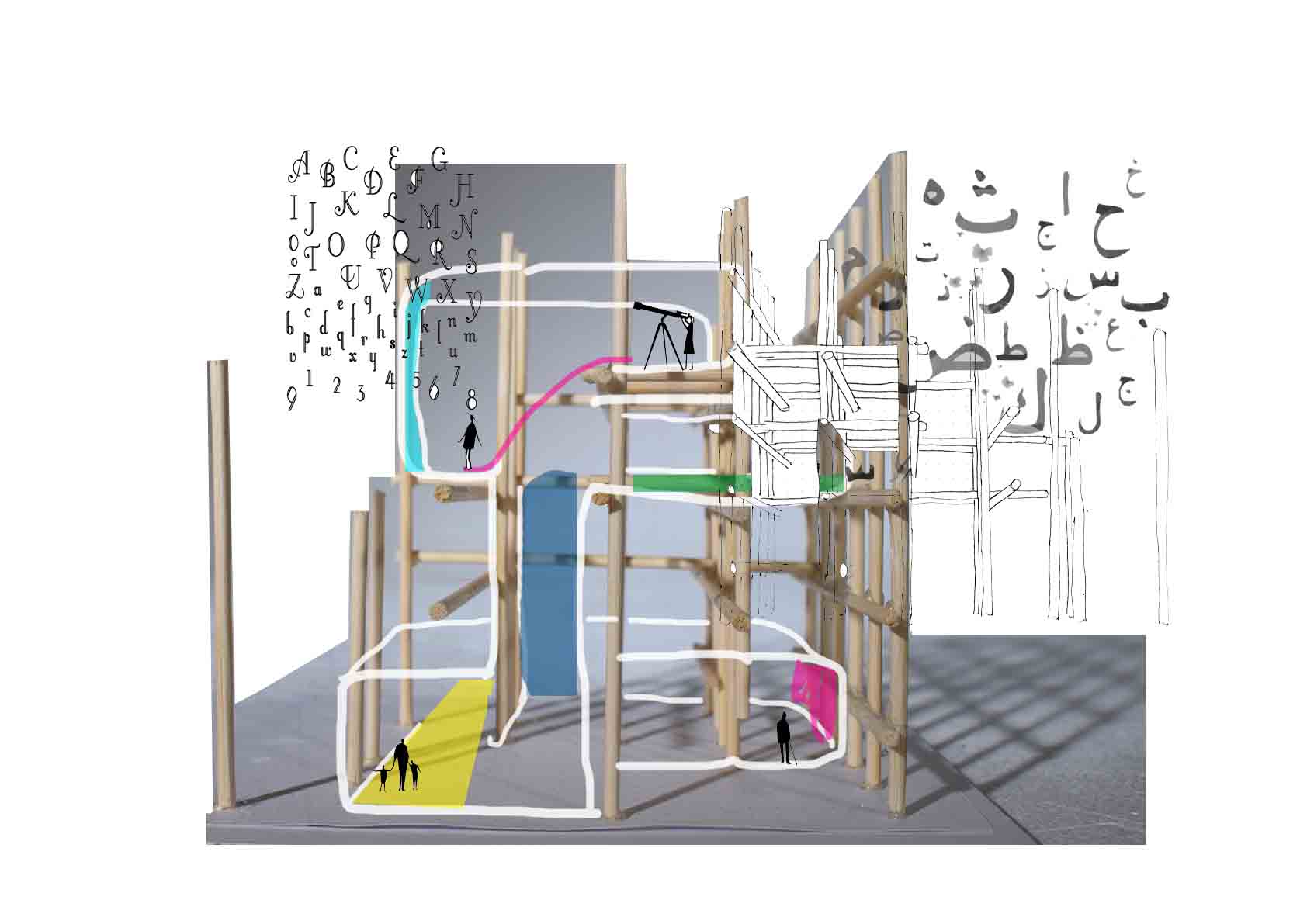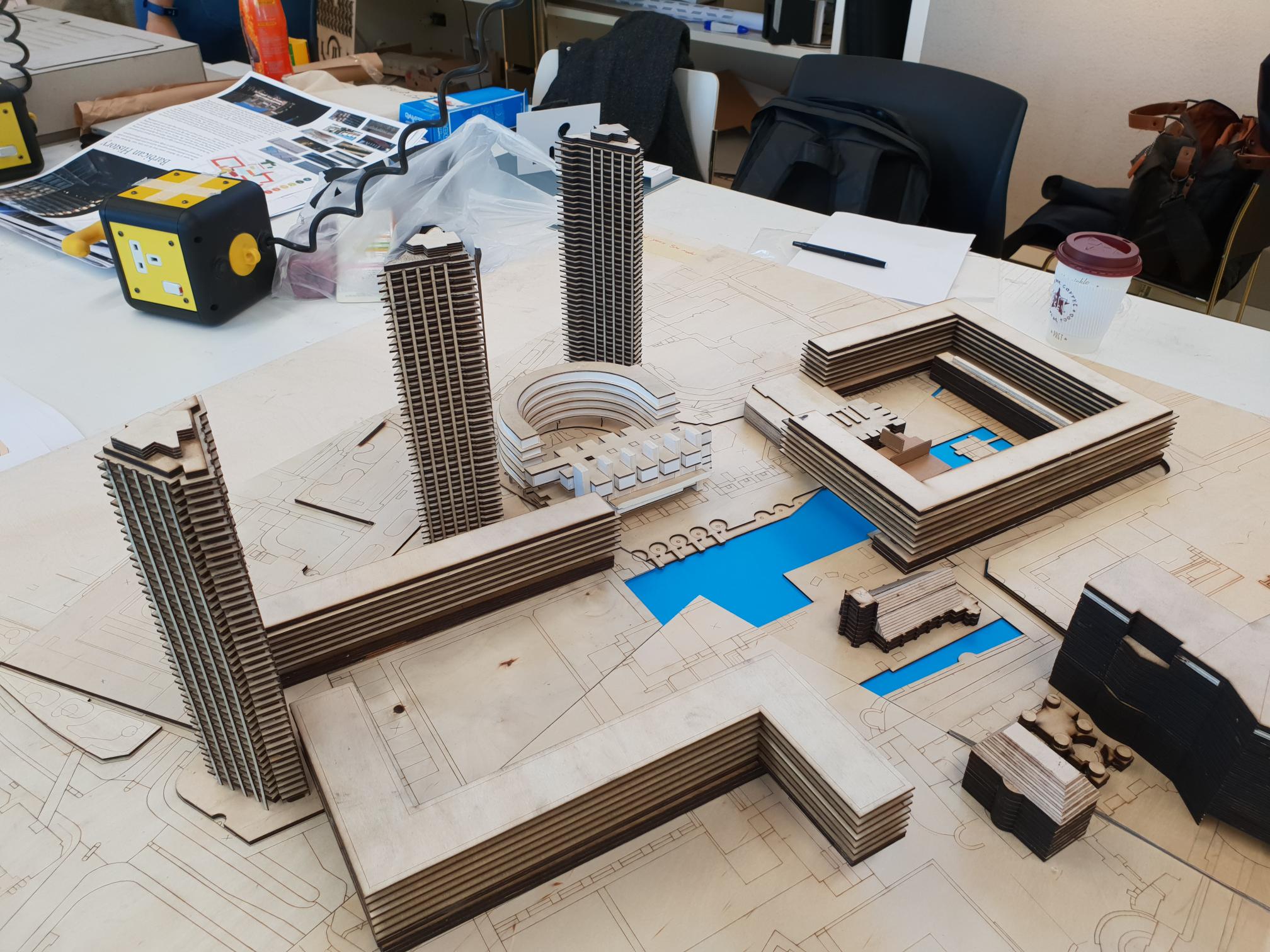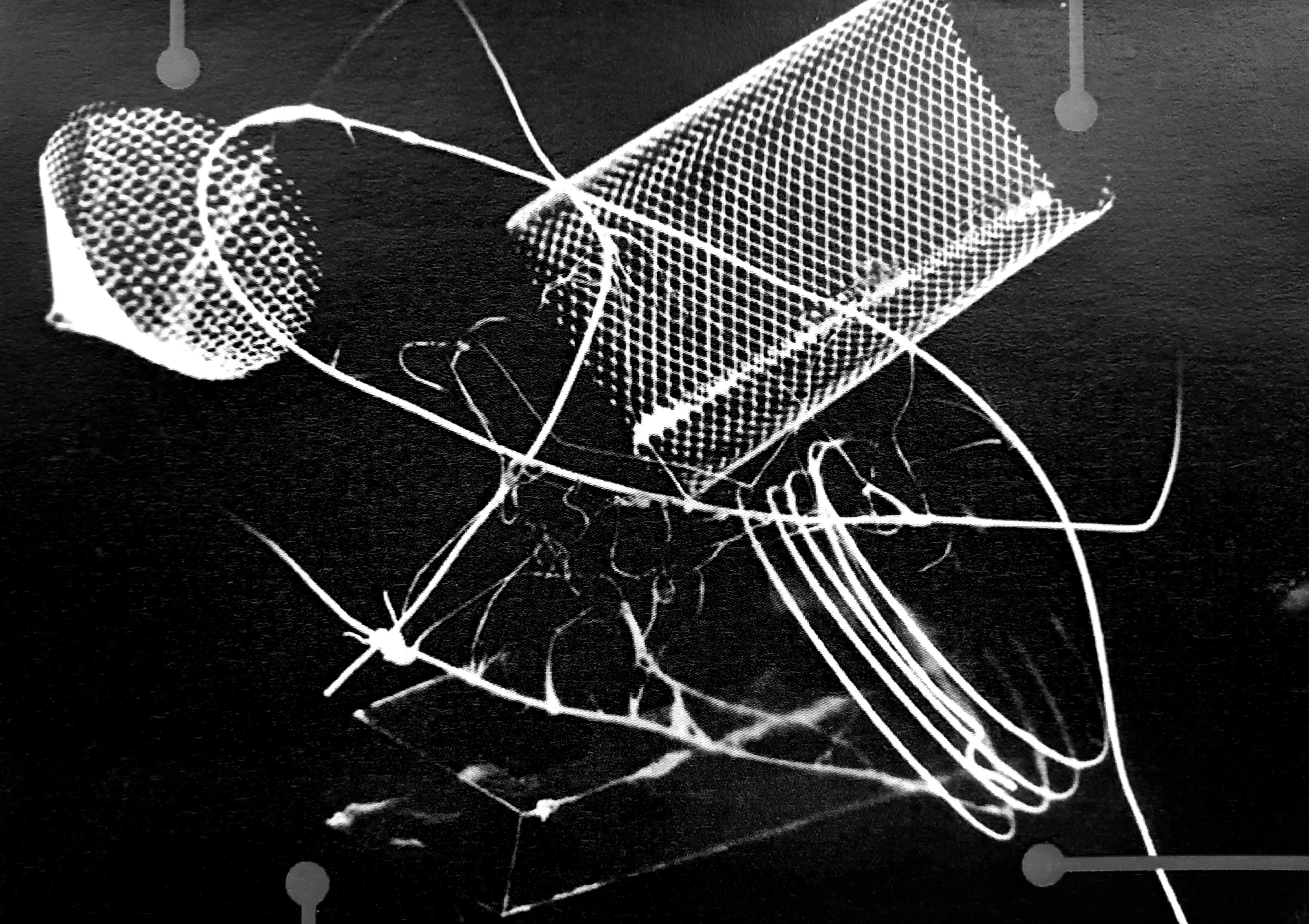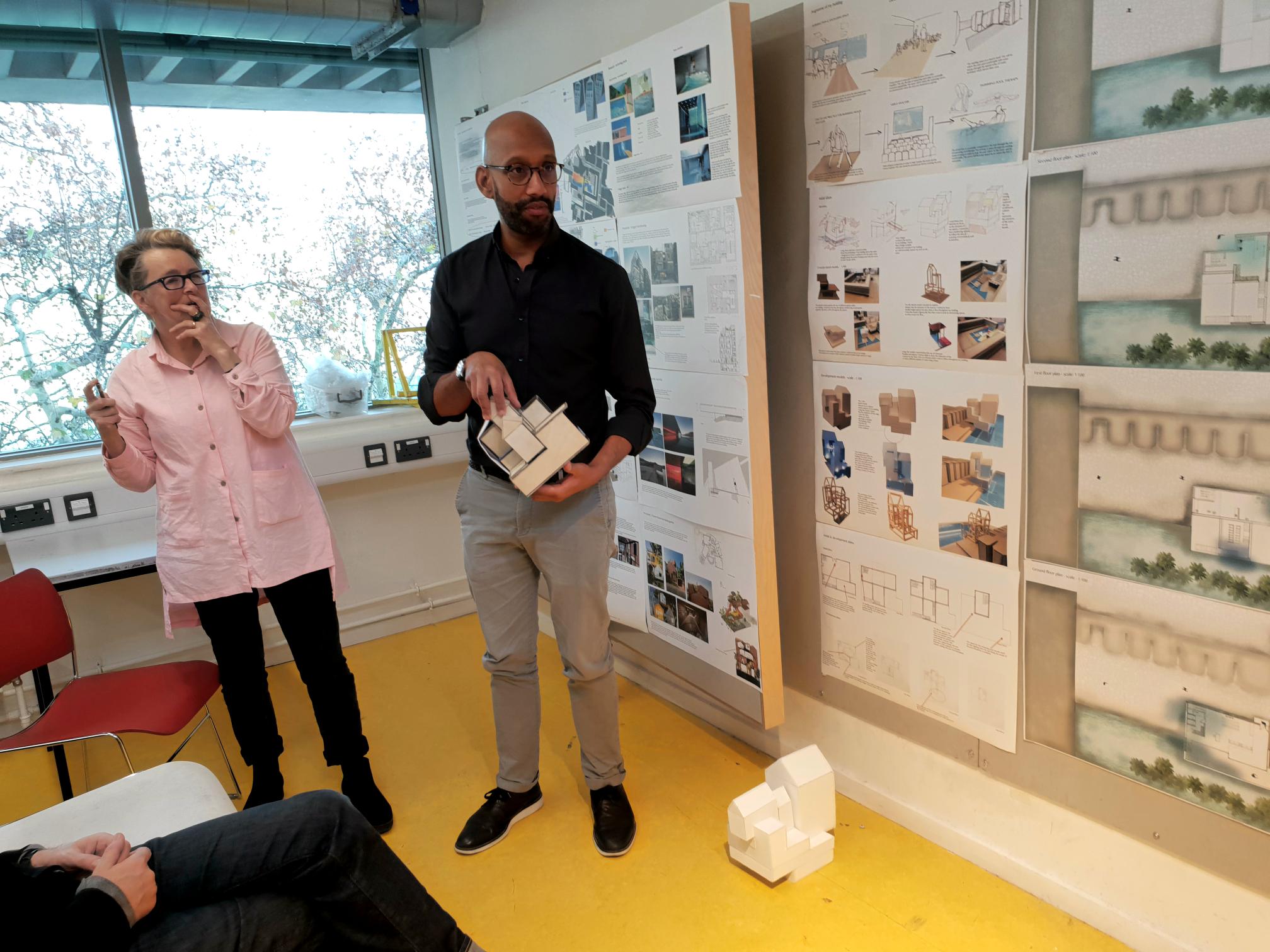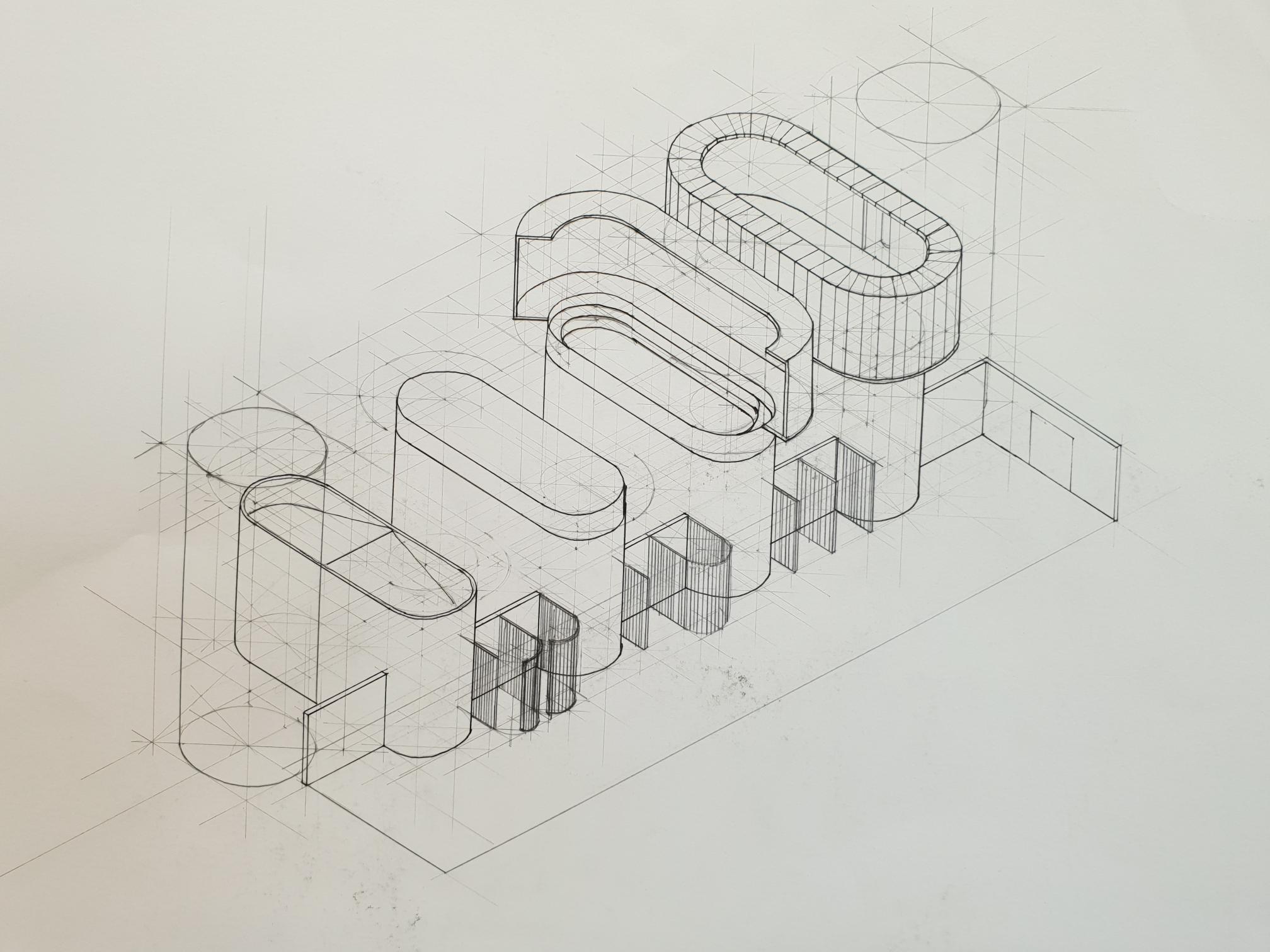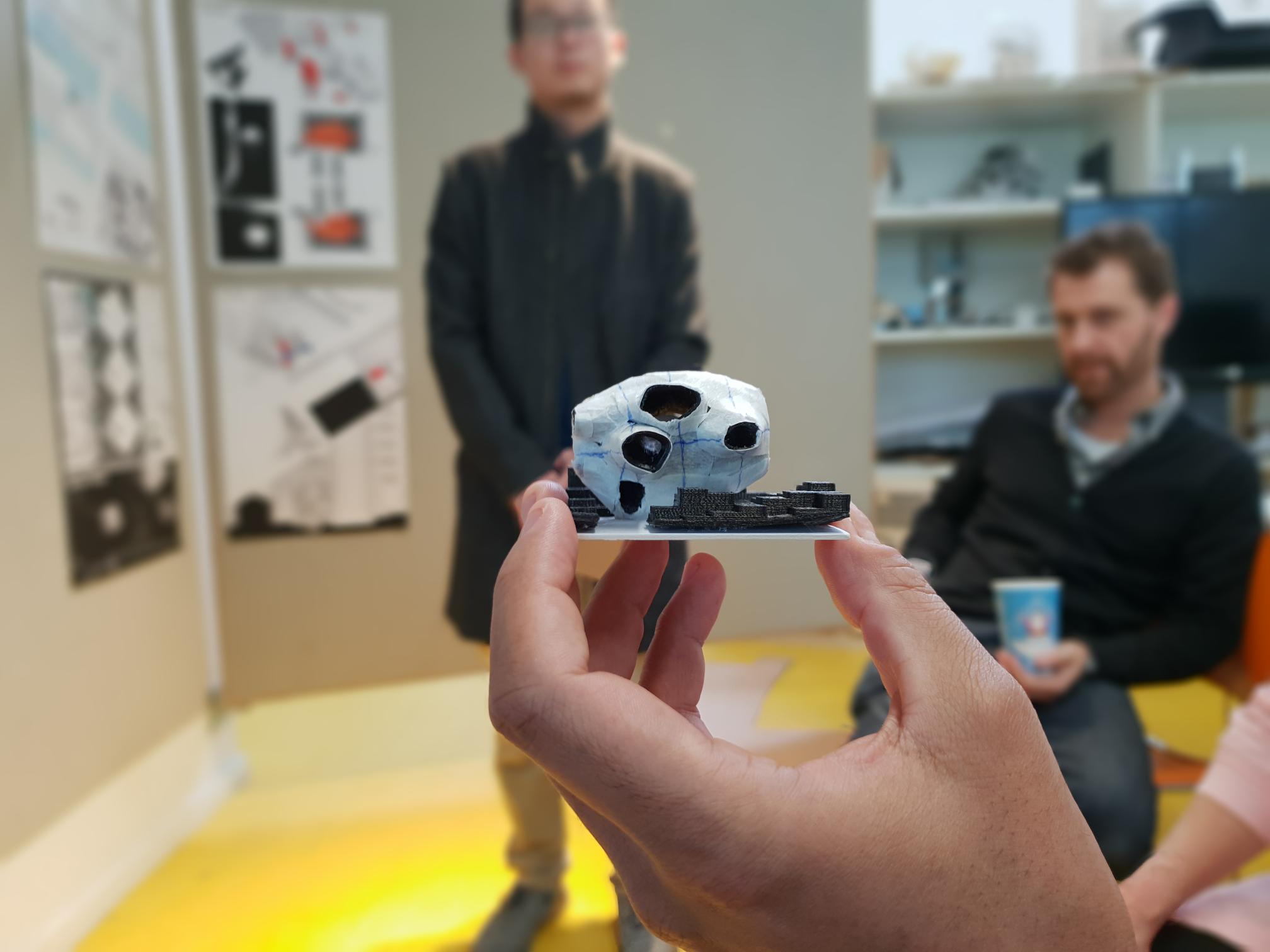Design Studio (Two) Three ARCHIVE
YEAR TWO – DS2.3
Tutors: Shahed Saleem & Michael Rose
Shahed Saleem is a practising architect and researches and writes on architecture’s relationship with cultural identity, heritage and nationhood. He works regularly with Historic England and is a Senior Research Fellow with the Survey of London.
Michael Rose has been teaching architecture for over forty years. He explores how architecture can enhance human experience and well-being, from the physical to the emotional, intellectual, and spiritual. He aims to instil in students a clear understanding of the design and making process.
RITUAL
This year we will explore social practice and architecture through the theme of RITUAL. We will start by asking what is a ritual and what are the rituals of everyday life in London today. These might be personal or communal, ancient or new, but whatever they are, how are they enacted in the buildings and spaces of the contemporary city. What new rituals might we invent, or anticipate as happening into the future city, and how do we design an architecture for them.
The act of ritual is a common thread that has linked humanity throughout the ages, regardless of ethnicity, culture or religion, but what role does it have to play in our increasingly secular lives?
Rituals motivate and move us. Through ritual we build families and community, we make transitions and mark important events in our lives, we express ourselves in joy and sorrow, and perhaps, most importantly, we create and sustain identity.
They come in every shape and colour. From solemn Roman Catholic High Mass to flamboyant Gay Pride celebrations. From shamanic rites practiced by the Huichol Indians of Mexico to modern-day self-help rituals.
While some may dismiss the practice as old fashioned, the act of ritual is an essential part of the human condition that remains with us today, simply, because it seems to work.
Unlike habits which are often mindless, rituals are generally mindful – a series of actions carried out for a specific purpose’
https://www.sbs.com.au/topics/life/culture/article/2016/06/27/why-rituals-are-still-relevant
A ritual is a well-defined sequence of words and actions designed to focus attention, establish significance, and achieve a beneficial result. Although some people think we have lost our sense of ritual, modern society makes use of many rituals to mark the beginning of significant events (baby showers, grand openings, ship launchings); the ending of life, or ways of life (funerals, bachelor parties, happy hours); the completion of important tasks or performances (graduation ceremonies, toasting successful negotiations, applause); the transition of one state or time period to another (birthday parties, anniversary celebrations, religious ceremonies like baptism/bar mitzvah/confirmation) and the making of connections (marriage ceremonies, church services, flirting). There exist abundant rituals for every occasion – so why are more and more people in this modern age seeking out rituals different from what they have?
https://www.huna.org/html/skritual.html
Read more on the links above.
Watch the Channel 4 series ‘Rites of Passage’ https://www.channel4.com/programmes/grayson-perry-rites-of-passage
Carry out your own research into ‘ritual’ as we go through the term. What are contemporary rituals in London today?
Programme
The site for the Semester 1 project will be the Barbican Centre. It will be divided into sites for you to choose and design your building into. We will build a 1:500 site model of the Barbican complex for a model of your building to be placed into. You will work in pairs to build part of the complex, which will be allocated to you. Over the next 3 weeks you will work on the site model (usually on Tuesdays) so that by the 18th October (or before) the model should be complete.
Task 1 – Site Investigation, 27th Sept – 2nd Oct
Visit the Barbican Centre and in pairs, draw one of the section lines marked on the site plan (as allocated to your pair). The section should be hand drawn, and does not have have to be completely accurate. You do not need to show the interior of the building that your section line cuts through, you can show the external profile of the buildings. You can estimate the heights of buildings, and try to draw you final drawing to a scale to best fit on an A1 landscape sheet.
Output: A section drawing, by hand, which you can colour/ collage – (be as creative as you like), showing the profile through your section line.
Format: A1 landscape paper / tracing paper
Due date: Tuesday 2nd October – bring the drawing to the studio session and pin it up
Task 2 – Concept Development, 27th Sept – 4th Oct
What is your ritual? This should be something that you experience. It can be personal, something you do with a few people, or something communal. It can be very regular (every day), or periodic (every week/ month / year). Try to choose a ritual that has a sequence of events and has some level of complexity to it – ideally it should not be too simple.
Output: A plan (diagrammatic) showing your ritual taking place. Show inhabitation and occupation, try to depict how you (and others if relevant) move in the space, show objects, furniture, things – make it interesting and inventive, use collage, textures, sketches…. Also, represent your ritual in any other way you see fit – a storyboard, diagrams, collage, photographs…. you can be creative and inventive in how you represent and describe your ritual. Have fun making this, make it yours.
Format: A1 landscape paper
Due Date: Thursday 4th Oct – pin up and discuss, choose and swap rituals with others
Task 3 – Concept Model, 4th Oct – 18th Oct
You are to take the ritual that you have chosen / been allocated (on Thurs 4th Oct), and interpret it by making a conceptual model that represents/ describes/ explores the characteristics and qualities of the ritual. We will talk about this further before you start.
Output: A conceptual model in any medium you prefer – size approx 40cm x 40 cm x 40cm max
Due Date: Thursday 18th Oct – display of all models and discussion
Task 4 – Design Development 18th Oct onwards
After this session (on Thurs 18th Oct) you will have been allocated your site in the Barbican, you will have a ritual that you have explored through your conceptual model and it will be time to start the design development for your building. We will talk about this further at this stage of the term.
Images: Model of the Barbican (group work), Gazala Bhatti, Critics Jill O’Conner & Damion Burrows, Anna Tabacu, Phong Phuong Hong










